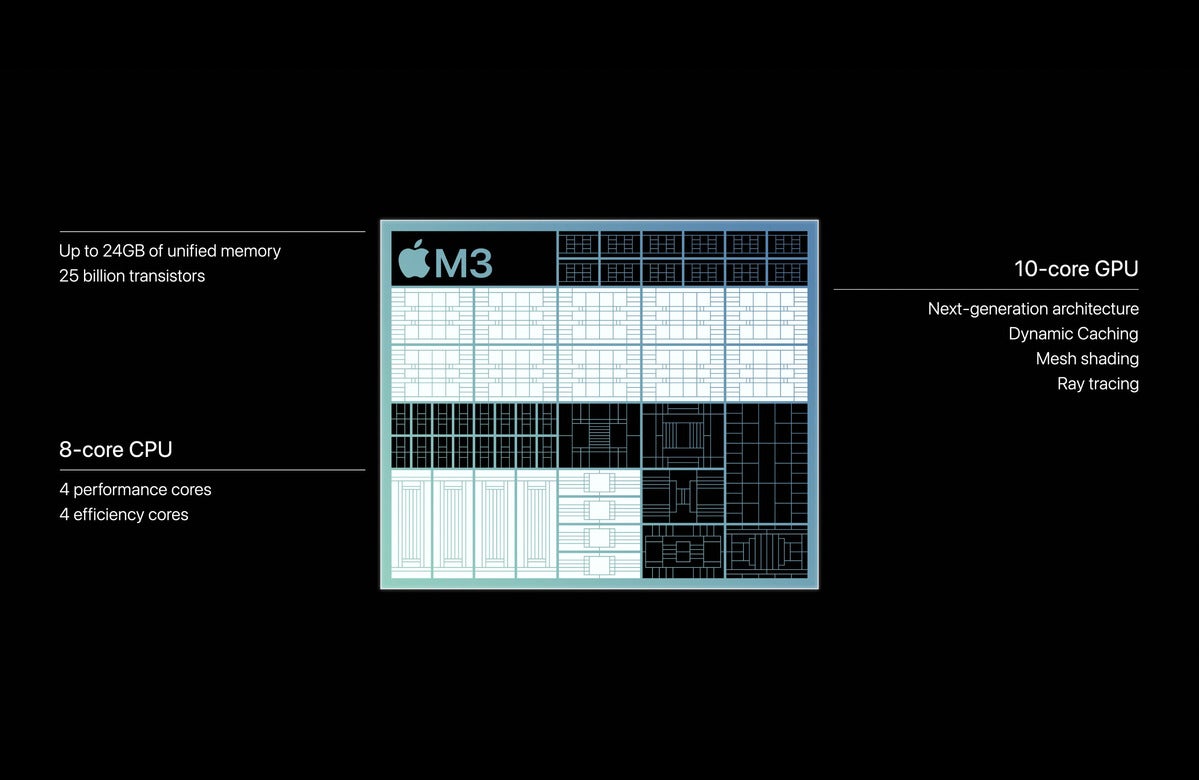The first M3 benchmark figures are showing up, which means it’s a good time to look at why (and how) Apple already won the processor wars.
Apple introduced the first three members of its M3 processor family this week: M3, M3 Pro, M3 Max. The M3 Ultra may show later if the company feels there is demand. We’ve also seen the first claimed Geekbench benchmarks for two of these chips:
M3 chip: Single-core performance of 3,030 and multi-core performance of 11,694.
M3 Max: Single-core performance of roughly 3,000 and multi-core performance of around 21,000.
Don’t jump in the lake
It is important to note that this degree of performance is being achieved in computers that use just 50 watts of power at peak performance, deliver 100% performance for up to 18 hours when using a battery, and barely get warm.
The chips already seem superior to Intel’s 16-core Meteor Lake processors, which top out at around 13,000 multicore, but use more energy. Apple’s new chips also raise the bar against Qualcomm, which just last week introduced a processor that almost competes with Apple’s now old M2 processors.
Sure, while you will find more performant chips, these won’t fit in the same slim Mac chassis, generally use much more energy, and cost a lot to obtain.
Here’s how Apple’s processors stack up against each other:
M3: 3,030 single-core, 11,694 multi-core.
M2: 2,570 single-core, 9,600 multi-core.
M1: 1,690 single-core, 7,304 multi-core.
M3 Max: around 3,000 single-core, around 21,000 multi-core.
M2 Max: 2,736 single-core, 14,495 multi-core.
M1 Max: 2,376 single-core,12,185 multi-core.
M3 Pro not yet known.
(Test data sometimes varies, but these figures should be relatively accurate guides.)
From the data, you can see that an entry-level MacBook Pro with an M3 chip now offers about as much benchmark performance as you got from a 14-in. MacBook Pro running the M2 Pro, while the M3 Max seemingly eclipses the highest-end M2 Ultra Mac Studio.
That’s a lazy comparison, of course, as the number of active cores in different Macs varies and there are other factors that come into play. But it does help put things into perspective.
Ever since Apple introduced the M-series chips, the company has effectively been competing against itself.
One huge step for Mac-kind
Here are three reasons why it will continue to do so:
Margins: Apple takes the same essential processor design and iterates it across its products. That means that when it comes to building the processor ,many features can be shared across iPhones, iPads, Macs, even Apple TV. It then iterates for each product family. The M5 processor Apple is almost certainly developing now will see its R&D budget paid for by future sales of hundreds of thousands of products that carry it. Apple doesn’t dominate in any of these categories, but the company is highly profitable, and its products sell in quantity. That means that Apple now gets to spend more on processor development than…
2023-11-06 18:41:03
Original from www.computerworld.com rnrn


















